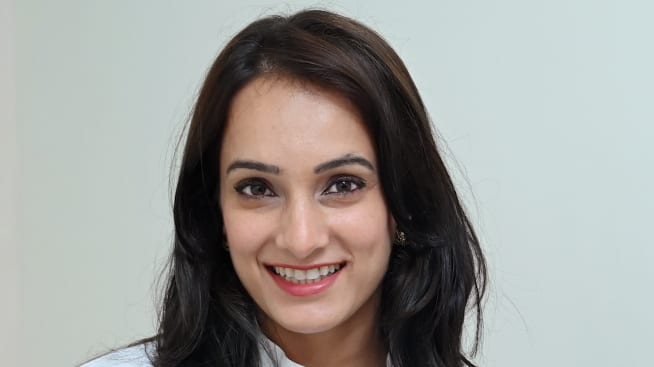Preventive dental care in India is often neglected due to low awareness, myths, and rising cosmetic trends. With innovations like AI, 3D scanners, and teledentistry, there’s growing potential to make oral healthcare more accessible, ethical, and future-ready.

Dr. Tania Nijhawan, Founder, Udana Wellness
Why isn’t preventive dental care more common in India, and can new tech like 3D scanners change that?
It is a common observance in our country that most people visit the dentist to address existing dental issues as and when they occur. Routine preventive care is not commonly practiced widely yet, which is vital when it comes to diagnosing oral health problems.
The difference in treatment costs is perhaps a significant issue; although dental care in India is more affordable than in the US or Europe, this may frequently undervalue the knowledge, talent, and technology required for contemporary dentistry practices. These instances prove to be serious obstacles to increasing oral health knowledge and practices.
One emerging trend in dentistry is the use of 3D scanners. They make taking highly accurate digital impressions with minimum time invested possible. Precise impressions lead to better treatment planning that gives better and, in some cases, faster treatment results. I also feel that dental lasers have made a big difference, especially in procedures such as cavity removal and gum reshaping. Minimally invasive procedures now involve lesser discomfort for my patients and quicker healing.
What lessons can India learn from global oral health practices to bridge the gap in access and awareness?
Every year, oral health issues cost hundreds of billions of dollars worldwide, not only for treatment but also because sick people miss work.The World Health Organization now views oral health as a critical part of overall health because it is associated with major disorders like diabetes, heart issues, and pregnancy concerns.In less developed countries, poverty is a major issue.Oral disease rates are frequently greater among those who struggle with basic healthcare; the issue is aggravated by poor diet, lack of information, and restricted access to dentists. However, because dental treatment is a component of general medical services, nations with more robust healthcare systems typically have higher oral health outcomes.
In places like the US and Europe, people are more regular with dental check-ups and hygiene visits, helping prevent small issues from turning into serious problems. Contrastingly, many developing countries are still to catch up in terms of awareness and affordability. Combined with modern lifestyle factors such as tobacco usage and teeth grinding while under stress, and diets that include high sugar levels, tobacco use, and oral health face a challenge across the globe.
How can we break myths and shift public mindset from dental treatment to prevention?
One of the biggest obstacles to maintaining good dental health is still ignorance when it comes to regular cleanliness and preventive exams.Oral health is usually seen as secondary to overall health, despite strong evidence linking it to illnesses like diabetes, heart disease, and respiratory disorders.More comprehensive awareness initiatives are needed to shift the emphasis from treatment to prevention.Education plays an important role in shaping attitudes.Public awareness campaigns, workplace wellness, and oral health education initiatives can all help normalize preventive dentistry.
Myths and stigma, such as the idea that tooth loss is inevitable with aging, the fear of pain, or the high expense, keep people from seeking timely care in many cultures. Breaking these barriers requires targeted communication, community-based interventions, and the use of digital platforms to reach younger generations effectively.
Is the rise of cosmetic dentistry redefining how we value oral health?
Now more than ever, people are turning to cosmetic dentistry. A confident smile has the power to transform people's perceptions of themselves and others. Indeed, nearly half of Americans believe that a grin is the most memorable aspect of meeting someone new.That speaks volumes about how it affects everything from weddings to job interviews.In India, whitening, veneers, implants, and clear aligners are becoming increasingly popular among young professionals and soon-to-be brides and grooms.
Social media, selfies, and celebrity culture have only added to the demand. A good smile is now seen as an investment in both personal confidence and social success.
Of course, there is another side to this too, where the treatments may focus on simply appearances while ignoring effects or consequences on long-term oral health. As most cosmetic procedures are usually not covered by insurance, affordability is also a challenge. The right guidance to balancing beauty with health is imperative.
How can we ensure that the future of dentistry is both tech-driven and ethically grounded?
AI is finding its way into dentistry, just like it is in every other field. Digital solutions, like mobile apps, teledentistry, and AI-based diagnostics, are allowing dentists to provide faster and more accessible dental care to patients in deprived and remote locations. People who may not visit a clinic could benefit from dental support at the right time and barriers being broken down by this digital change. Oral health must simultaneously be preventive, affordable, and equitable in the future. We can guarantee that dentistry is viewed as a need rather than a luxury by including dental care in primary healthcare systems. To increase reach, governments and policymakers must prioritize preventive education, accessible and cheap healthcare, and collaborations between the public and private sectors.
As cosmetic dentistry continues to grow, the industry must stay responsible, keeping ethics, affordability, and long-term health at the center. The true way forward is a global movement for oral health—one that blends innovation with inclusivity and awareness, making healthy smiles possible for everyone.
Empower your business. Get practical tips, market insights, and growth strategies delivered to your inbox
By continuing you agree to our Privacy Policy & Terms & Conditions
